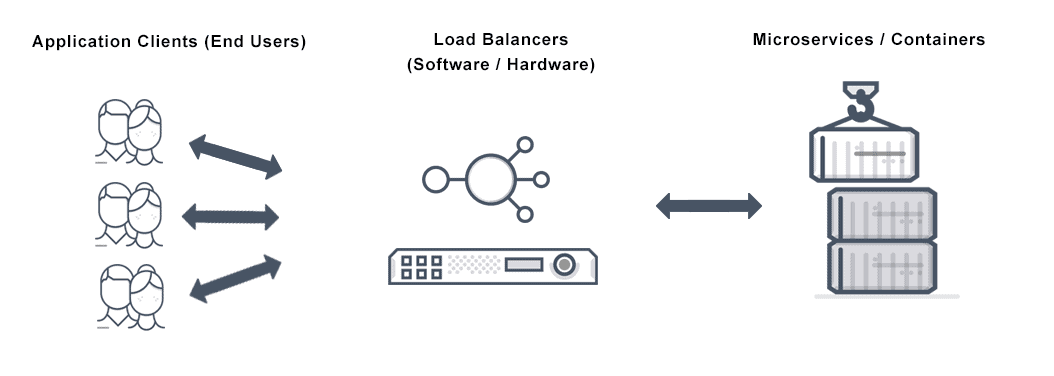Container Load Balancing Definition
Container load balancing and proxy services are essential for container-based applications built on the microservices architecture both in terms of traffic management and peak performance.

What Is Container Load Balancing?
Container load balancing helps to deliver traffic management services for containerized applications efficiently. Today’s developers use containers to quickly test, deploy, and scale applications through continuous integration and continuous delivery (CI / CD). But the transient and stateless nature of container-based applications requires different traffic control for optimal performance.
Orchestration platforms like Kubernetes deploy and manage containers. A load balancer in front of the Docker engine will result in higher availability and scalability of client requests. This ensures uninterrupted performance of the microservices-based applications running inside the container. The ability to update a single microservice without disruption is made possible by load balancing Docker containers. When containers are deployed across a cluster of servers, load balancers running in Docker containers make it possible for multiple containers to be accessed on the same host port.
How Does Container Load Balancing Work?
Docker is a common platform for running applications in containers. This includes the packaging, distribution and management of independent applications within containers.
In addition to management tasks, container load balancing also involves infrastructure services that make sure the applications are secure and running efficiently.
The following is necessary:
• Containers deployed across a cluster of servers.
• Continuously updated without disruption.
• Load balancing for multiple containers on a single host accessed on the same port.
• Secure container communication.
• Monitoring of containers and the cluster.
What Are the Benefits of Container Load Balancing?
The benefits of container load balancing include:
• Balanced distribution — A user-defined load balancing algorithm distributes traffic evenly (if non-weighted round robin is applied) through the healthiest and most available backends to the endpoint group.
• Accurate health checks — Direct health checks of the pods is a more accurate way to determine the health of the backends.
• Better visibility and security — Visibility is possible at the pod or even container level, depending on the granularity required. The IP source is preserved for easier tracking of traffic sources.
Does VMware NSX Advanced Load Balancer Offer Container Load Balancing?
Yes. The VMware NSX Advanced Load Balancer integrates with container-based environments to provide dynamically configured load balancing, service discovery, service proxy, application mapping, and autoscaling capabilities. The solution also provides end-to-end visibility and performance monitoring at the microservice and service-fabric levels, and autoscales application instances across thousands of nodes based on real-time traffic and application performance.
For more information see the following Container Load Balancing resources:
For more on the actual implementation of load balancers, check out our Application Delivery How-To Videos or watch the Enterprise-Grade Ingress and Load Balancing for Kubernetes How To Video here: